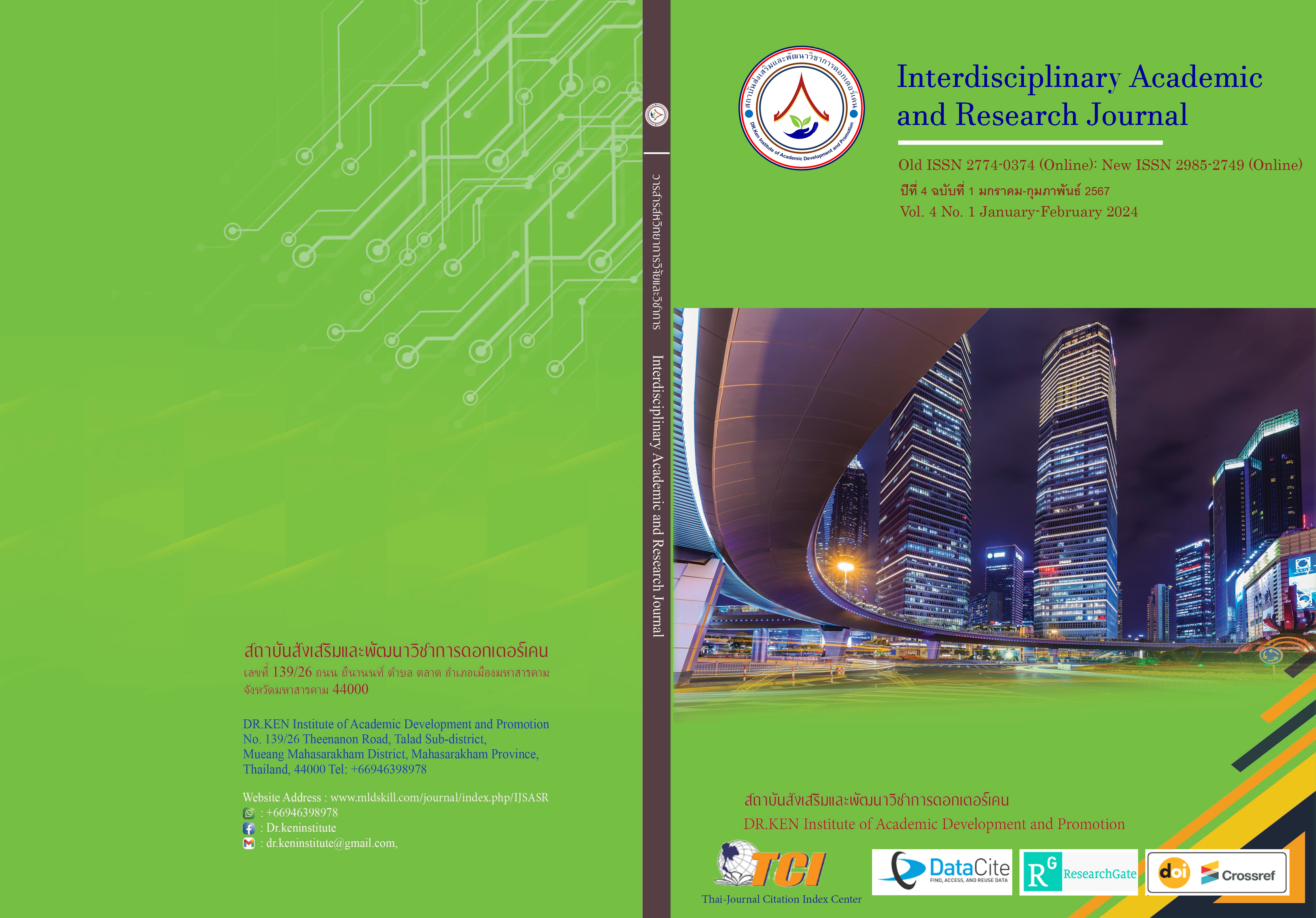The Intention of Conscription into State Military Labour
DOI:
https://doi.org/10.60027/iarj.2024.272416Keywords:
Citizen Labor; , Conscription; , Military Service Act; , Violation of rightsAbstract
Background and Aims: Currently, the forced conscription of citizens to serve as soldiers in many civilized countries is conscripted under Convention No. 29 on forced or forced labor. Thailand has had a forced labor system since the past to control the military force which is considered an important force for use in protecting and maintaining the country's sovereignty. The purpose of this research is to outline the goals and objectives of the conscription of citizen labor into military labor.
Methodology: The research methodology used is qualitative research. Contains document research, and in-depth interview resulted in the discovery that the problem occurred because the law of Thailand did not specify the objective framework for conscripting citizens into military labor.
Results: The finding found that (1) military labor has been used in a way that is not by the international objectives of forced labor, causing violations of the rights of conscripted military workers, both physically and mentally. (2) In addition, we found 4 guidelines for conscription law development: The only purpose of the conscription of citizen labor must be for the security of the country, there must be an establishment of the training framework for military readiness, there are assigned special rights and benefits of conscripted soldiers, and lastly the assignment of duties must be clear. (3) the recommendation is to add provisions regarding the goals and objectives of conscripting citizens into military labor into the constitutional law and amend the Military Service Act to be consistent with constitutional law within the specified period. So that the law, both at the Constitutional and Act levels, has a clear objective framework. This is to prevent the wrong use of conscripted labor at the discretion of commanders and to protect the rights, freedom, and human dignity of forced citizen workers.
Conclusion: In the past, the Thai Military Service Act used to focus only on the form. Recruitment procedures and protection of benefits and remedies for conscripts only. in the development of state military conscription law Next, the objectives and training procedures should be framed to increase skills in protecting the nation. and the recruitment of citizens must be for the security of the country. A training framework has been established to prepare the military. and must specify the special rights and welfare of conscripted soldiers. and clearly define the framework of responsibilities
References
แสวง บุญเฉลิมวิภาส. (2558). ประวัติศาสตรกฎหมายไทย. กรุงเทพฯ: สำนักพิมพ์วิญญูชน.
นันทิยา สว่างวุฒิธรรม. (2525). การควบคุมกำลังคนในสมัยรัตนโกสินทร์ก่อนการจัดการเกณฑ์ทหาร(พ.ศ. 2325-2448). กรุงเทพมหานคร. ภาควิชาประวัติศาสตร์ บัณฑิตวิทยาลัย จุฬาลงกรณ์มหาวิทยาลัย.
พงศธร จันทร์แก้ว. (2563). จากการเกณฑ์ทหารสู่การอุ้มหาย: การละเมิดและการเพิกเฉยของรัฐผ่านมุมมองของอดีตทหารเกณฑ์. Retrieved from: https://www.tcijthai.com/news/2020/26/article/10576
ลิขิต ธีรเวคิน. (2542). วิวัฒนาการการเมืองการปกครองไทย. กรุงเทพฯ: สำนักพิมพ์ มหาวิทยาลัยธรรมศาสตร์.
Dicey, A.V. (1959). Introduction to the Study of the Law of the Constitution (1885). London: Macmillan.
Israel Defense Service Law (1986). Israel: Basic Law of 1976, The Army. (9 April 1976). Retrieved from: https://www.refworld.org/docid/3ae6b51dc.html
Levi, M. (1996). The Institution of Conscription. Social Science History, 20 (1) 133 – 167. DOI: https://doi.org/10.2307/1171506
Downloads
Published
How to Cite
Issue
Section
License
Copyright (c) 2024 Wanaporn Phanphruk , Sasiorn Into

This work is licensed under a Creative Commons Attribution-NonCommercial-NoDerivatives 4.0 International License.
Copyright on any article in the Interdisciplinary Academic and Research Journal is retained by the author(s) under the under the Creative Commons Attribution-NonCommercial-NoDerivatives 4.0 International License. Permission to use text, content, images, etc. of publication. Any user to read, download, copy, distribute, print, search, or link to the full texts of articles, crawl them for indexing, pass them as data to software, or use them for any other lawful purpose. But do not use it for commercial use or with the intent to benefit any business.
















.png)


